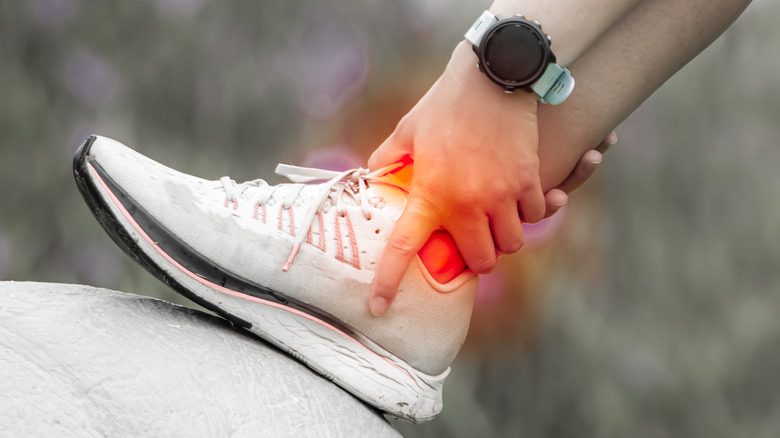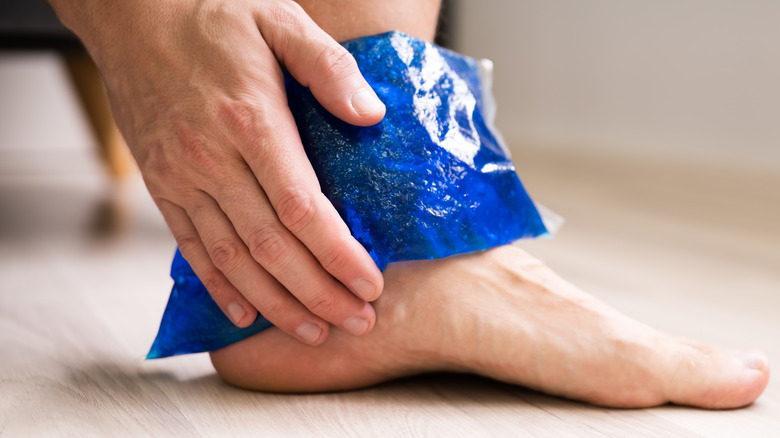What Happens If A Torn Achilles Tendon Goes Untreated?
The 6-inch band of tissue toward the back of each of your legs that connects your calf muscle to your heel bone is referred to as the Achilles tendon, or the calcaneal tendon (via the Cleveland Clinic). As the strongest tendon in the body, the Achilles tendon helps raise our heels off the ground during movement and can withstand up to 4 times our body weight.
According to Silverman Foot & Ankle, the name of this tendon stems from a Greek myth in which the warrior Achilles was dipped by his mother into a river that would make him invincible for all time. Held upside down, Achilles' heels were left untouched by the water, leaving them vulnerable and ultimately leading to his death by a poisonous arrow.
Often a result of sports activity such as basketball, football, soccer, or running (via UT Southwestern Medical Center), the Cleveland Clinic reports that roughly 1 in 4 athletes are affected by an Achilles tendon injury. What are the symptoms of such an injury, and is it best left to heal on its own?
An Achilles tendon injury can develop into a rupture
In short, the answer is no — you don't want to leave an Achilles tendon injury untreated, as it is not likely to mend itself without some form of intervention. Those with a case of Achilles tendonitis may experience swelling in the heel, pain, tightness, and difficulty flexing the foot (via Rothman Orthopaedics). If left alone, tearing can occur that may cause the tendon to rupture. While treatment for an Achilles tendon injury does not usually require surgery, in the event of a rupture, the necessity for surgical intervention or casting increases.
Achilles tendon ruptures impact nearly 1.8 per 100,000 people each year (via UT Southwestern Medical Center). A popping sound often occurs in the midst of the injury, and the subsequent pain can make walking challenging (via the Mayo Clinic). That's why it's important to begin treating an Achilles tendon injury right away before it progresses into a rupture. According to experts at Rothman Orthopaedics, you'll first want to rest the foot in order to reduce the swelling. Next, ice the area in order to increase blood circulation, which can help ease the pain.
If needed, anti-inflammatory medications can be used to further reduce the pain. Most importantly, stretching can be used as a form of prevention, as well as aftercare. Under the supervision of a physical therapist, stretching can help strengthen the area after injury.


